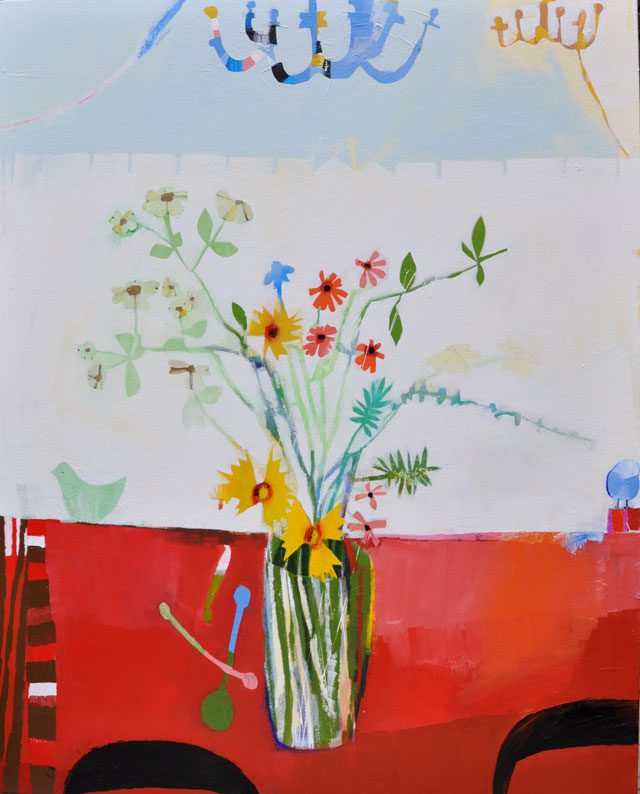
[dropcap]Combine[/dropcap] bunnies, bicycles, wildflowers and rotary telephones with the colors of Henri Matisse and the lines of Paul Cezanne, and you’ll come close to the still lifes of Wendeline Matson.
Tulsa, with its Art Deco skyscrapers, and the surrounding plains, with oil wells rising from the earth, provide a nearly perfect atmosphere for an artist whose work highlights shape and landscape.
“Shape draws me in,” she said. “When I see certain shapes, I want to remember them.”
Matson has an entire series of paintings called Prairie, comprising landscapes with figures or shapes like bunnies, bicycles and cows placed against them.
“I’m totally inspired by this landscape,” she says. “Tulsa is a gorgeous city.”
Matson says Tulsa feels a great deal like an East Coast city. When she moved from Fayetteville, Arkansas, 15 years ago, she quickly realized Tulsans take artists seriously as professionals, and that respect has made her feel at home. Tulsa gives Matson, who is constantly observing the world, much visual stimuli.
“If I see something that inspires me, the sky or illustrations, I can try to paint it, but it ends up being totally different,” she says. “You try to take what you see and make it your own.”
Matson attributes her love for color to her need for vision correction in childhood. Until sixth grade, she saw the world in blocks of color.
“I had polka dots on my bedroom wallpaper, for example, and didn’t realize it,” she says.
After getting glasses, Matson says detail, particularly a sense of line, began to develop her artistic vision.

As she got older, Matson was drawn to Henry Hensche’s colorist movement, in which colors are made to appear brighter than in real life. While earning a bachelor of fine arts degree at the University of Arkansas, with additional work in Italy, Matson studied painting and sculpture. She recognizes David Hockney and Milton Avery as her greatest inspirations.
“David Hockney is one of those people who just made me want to paint,” says Matson, who works primarily on canvas with acrylics. She sometimes paints with oils, depending upon the project.
Matson, whose husband is a petroleum geologist, is fascinated by industrial equipment. Objects such as light bulbs already appear in her work, but in the future she might include her perspective on industrial beauty, both small and large utility mechanisms. Matson’s paintings bring life to an odd shape found in her bedroom window or to objects relegated to antiquity like rotary phones.
Matson frequently has shows in Boston at Jules Place and in Santa Fe, New Mexico, at the Giocobbe-Fritz Fine Art gallery. Her next solo exhibit in Tulsa is slated for 2018 at the MA Doran Gallery.

























